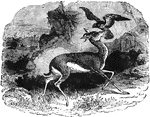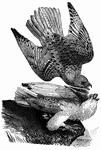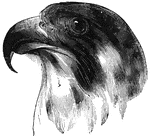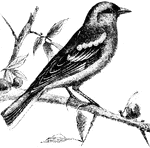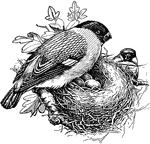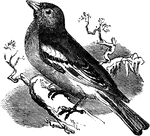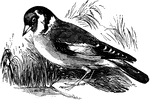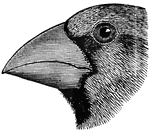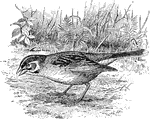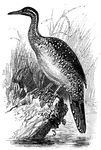266 illustrations of birds including: falcon, finch, flamingo, fly-catcher, fulmar, gadwall, gallinule, gannet, garganey, gnatcatcher, goat-sucker, goldfinch, goosander, goose, goshawk, grallatore, grebe, grosbeak, guan, guillemot, guinea fowl, guitguit, and gull

Bill of Gadwall
The bill of the Gadwall Duck, showing the comb-like 'teeth' that they are known for.
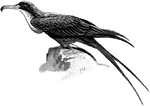
Frigate Bird
"The Frigate pr Mana-of-War-Bird... is met throughout the tropical regions, breeds in Laysan and has…
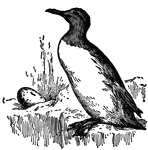
Common Guillemot
The Common Guillemot (Uria troile) is a member of the auk family. It breeds on all rocky coasts of the…
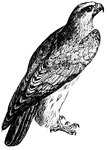
Falcon
Falcons are a group of birds of prey that vary in size from the falconet to the gyrefalcon. They can…
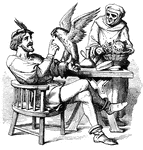
Man Sitting with a Falcon
A man is sitting at a table with a falcon resting on his left arm. He raises his right hand toward the…
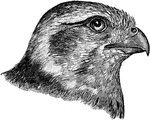
Prairie Falcon Head
"Falco mexicanus. American Lanner Falcon. Prairie Flacon. A medium-sized species, distinguished from…
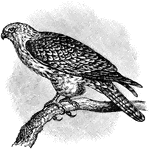
Gyrfalcon
The Gyrfalcon (Falco rusticolus) is a predatory bird in the Falconidae family of falcons and caracaras.…
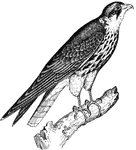
Hobby Falcon
With sharp claws, penetrating vision, and enormous strength, it is easy to understand that these birds…
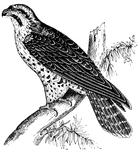
Peregrine Falcon
With sharp claws,penetrating vision, and enormous strength, it is easy to understand that these birds…
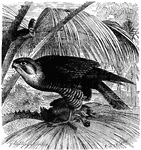
Red-Necked Falcon, or Turumdi (Falco Chiquera)
"The falcons, it may be said, realize the ideal of a bird of prey. They feed only on living animals,…

Sultan Falcon
With sharp claws,penetrating vision, and enormous strength, it is easy to understand that these birds…
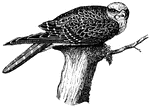
Sultan Falcon
With sharp claws,penetrating vision, and enormous strength, it is easy to understand that these birds…
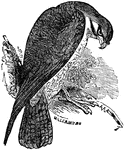
The Falcon
"The Falcon is a famous bird of prey. It is characterized by a bill curved from the base."

Falconelle
Native to Australia, the falconelle is approximately the size of a sparrow, and resembles the great…

Falcons
"Falcons. Bill furnished with a sharp tooth and notch near the end of the cutting edge of the upper…
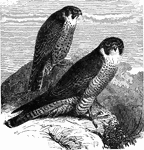
Two Lanner Falcon
"Falco mexicanus. American Lanner Falcon. Prairie Flacon. A medium-sized species, distinguished from…
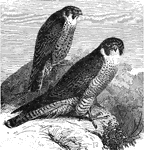
Two Peregrine Falcons
"Falco peregrinus. Peregrine Falcon. Duck Hawk. Great-footed Hawk. A medium-sized falcon, about as large…

Peregrine Falcon Small
"Falco peregrinus. Peregrine Falcon. Duck Hawk. Great-footed Hawk. A medium-sized falcon, about as large…

Finch
This finch, called a linnet, feeds primarily on hemp and linseed, hence its name, (Figuier, 1869).
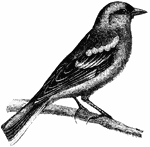
Finch
This finch, called a linnet, feeds primarily on hemp and linseed, hence its name, (Figuier, 1869).
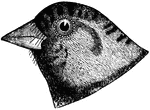
Brandt's Rosy Finch
"Leucosticte griseinucha. Brandt's Rosy Finch. Like the littoral variety of tephrocotis, in having the…

Bull Finch
Resembling a grosbeak, the bull-finch is common and England, and can be found in other regions of Europe…
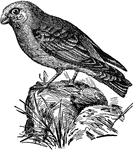
Bull Finch
"The Bull Finch is a well known bird, locally know as the norskpipe, the coal-hood, the hoop, or the…
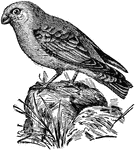
Bull Finch
A well known English bird, known as the coal-hood, the hoop, or the tony hoop, the alp, and the hope.
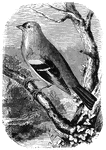
Hawfinch
Feeding on pollen-stalks, laurel-berries, and the like, the haw-finch is also known as the common grosbeak…
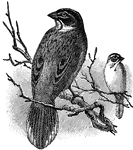
Lark Finch
A North American bird having a long graduated, party colored tail, and the head much striped.
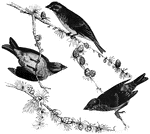
Purple Finch
The purple finch, also known as the American linnet, has a habit of erecting the feathers of its head…
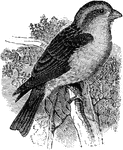
Purple Finch
"Carpodacus purpureus. Purple Finch (better Crimson Finch). Rose-red, paler below, insensibly whitening…
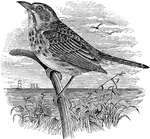
Seaside Finch
"Ammodramus maritimus. Seaside Finch. Olive-gray, obscurely streaked on back and crown with darker and…
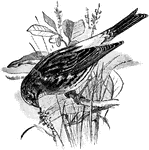
Serin Finch
The Serin Finch (Serinus hortulanus) is a small passerine bird in the Fringillidae family of finches.

Swainson's Rosy Finch
"Leucosticte tephrocotis. Swainson's Rosy Finch. Gray-crowned Rosy Finch. Sexes similar. Adult in breeding…
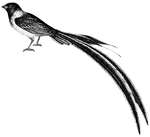
Whidah Finch
The long, drooping tail feathers of the male Whidah finch in the breeding season give them a singular…
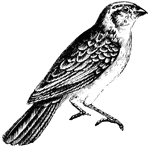
Whidah Finch
The long, drooping tail feathers of the male Whidah finch in the breeding season give them a singular…
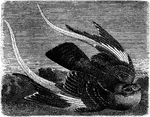
Flag Night-Jar
"Sometimes one may observe eight of ten on the wing together in the dusk of evening in pursuit of insects."

Flamingo
The flamingo is found in Africa and Asia. The color of the plumage is a deep brilliant scarlet, except…
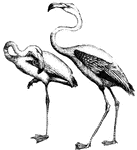
Flamingo
The flamingo is found in Africa and Asia. The color of the plumage is a deep brilliant scarlet, except…
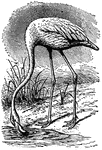
Flamingo
Flamingos are gregarious wading birds in the genus Phoenicopterus and family Phoenicopteridae. They…

American Flamingo
The American flamingo (Phoenicopterus ruber) is a large wading bird known for its red or pink feathers.
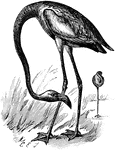
American Flamingo
The American Flamingo (Phoenicopterus ruber) is a large wading bird in the Phoenicopteridae family of…
